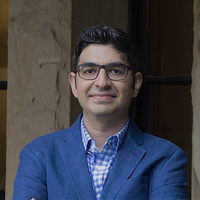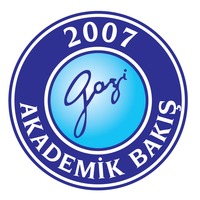
Pooya Azadi
Pooya Azadi is the manager of the Stanford Iran 2040 Project. His multidisciplinary research interests include energy, environment, and economics. Particularly, he is interested in the development of mathematical models to tackle complex problems at different scales. Prior to joining Stanford, he worked as a researcher at the universities of Oxford, Cambridge, and MIT for several years.
less
Related Authors
Matin Mirramezani
Stanford University
Ali Fathollah-Nejad
SOAS University of London
Richard Cincotta
Woodrow Wilson International Center for Scholars
halil kürşad aslan
Istanbul Medipol University
Roschanack Shaery
University of Antwerp










Uploads
Papers by Pooya Azadi
In order to better understand the trends in Iran’s scientific output, we compiled and analyzed large datasets of approximately 450,000 papers (publication year, journal, citations, and authors affiliations), journals information, hyper-prolific authors, retracted papers, publications in predatory journals, and demographic and economic data. We also performed a first-hand investigation of agencies that offer writing (fabricated) papers on demand.
We found that the annual number of papers published by Iranian researchers has increased from about 1,000 papers in 1997 to more than 50,000 papers in 2018, boosting Iran’s contribution to the world’s annual scientific output from 0.1% to 2.6%. Fundamental sciences comprise 41%, medicine and health 22%, engineering 22%, agricultural and environmental sciences 10%, and social sciences 5% of total publications. The quality of publications, as measured by the rank of journals in which the papers were published, varies significantly across disciplines, with engineering consistently outperforming other academic fields. However, the quality of publications does not show a significant adverse change over time in most of the fields, except in medicine and health. Overal, Iran’s global rank of aggregate citations has consistently underperformed its rank based on the total number of publications.
Internationally co-authored papers constitute about 20% of Iran’s publications. On average, papers on which the corresponding authors were affiliated with a foreign institution receive twice as many citations as those whose corresponding authors are affiliated with domestic research institutions. The share of international collaboration has declined constantly from 1997 until 2012, and only recently started to show a mild upward shift (from 2012 to 2018), presumably due to the rise in the number of Iranians working at foreign universities. The corresponding authors on almost 40% of these papers were affiliated with foreign institutions, with half of them being scholars who were originally from Iran but are now working abroad.
The demographic trends and rapid expansion of university capacities resulted in nearly ten-fold increase in the number of graduate students over the past two decades, providing large and inexpensive human resources for research, which partly explains the rising trends in scientific output. By comparison, new faculty recruitment has failed to keep up with growth in the number of students, which suggests a plausible reduction in the quality of teaching and research. Another important contributing factor to the rising trend of papers is the government’s policy in higher education that make academic promotions and student graduation contingent upon publication of papers in scientific journals. These policies have created an environment that lends itself to the most extreme form of the publish-or-perish paradigm. Absent proper training in the ethics of scientific research and punishment for the plagiarists, these mandates have led to systemic academic corruption, which manifests itself in Iran’s place among the countries with the highest rate of plagiarism and retractions. With the academic corruption prevailing even at the highest levels of government officials, chances for the implementation of stricter measures and regulations against fraudulent misconduct appear small in the foreseeable future.
In summary, our study highlights that Iran benefits from a window of opportunity for development by virtue of its large human capital endowment in higher education and research, both inside and outside the country. However, instead of employing this massive potential in a way to meaningfully contribute toward the development and prosperity of the nation, the dominant government policy and the official rhetoric focus on the quantity of publication as their primary goal. The state’s official discourse misrepresents the size of the nation’s scientific output as an equivalent to developmental progress. Exaggerated claims in this area play a key role in public propaganda to appease national pride and to portray a progressive picture of the state’s policies and performance. Such a superficial emphasis on quantity naturally leads to the absence of a qualitative approach to scientific research and development and its organic relationship with the fundamental aspects of society and economy. Pervasive research corruption—with recent notorious examples just revealing the tip of the iceberg—is a direct consequence of such a productionist approach to research. If there is no fundamental change in the current paradigm, the ultimate outcome of such scientific policies will be nothing but a facade of scientific accomplishment with a disproportionately small contribution to real scientific progress and an even smaller impact on the welfare of the nation.
Iran's land suitability for agriculture was classified as: very good 0.6, good 3.6, medium 12.8, poor 18.5, very poor 10.2, and unsuitable 97.4 million ha. Among the considered soil and terrain attributes, low soil organic carbon, steep slope, and high soil sodium content were identified as the most frequent factors limiting the suitability of lands for cropping. Our analysis also revealed that 30%, 5%, and 17% of the current agricultural lands (cultivated and uncultivated) are located in poor, very poor, and unsuitable areas, respectively. Cultivation in very poor or unsuitable lands can be partially avoided as there exist unused lands with at least a medium level of suitability for substitution that can improve the overall sustainability of the agriculture sector in Iran.
In order to better understand the trends in Iran’s scientific output, we compiled and analyzed large datasets of approximately 450,000 papers (publication year, journal, citations, and authors affiliations), journals information, hyper-prolific authors, retracted papers, publications in predatory journals, and demographic and economic data. We also performed a first-hand investigation of agencies that offer writing (fabricated) papers on demand.
We found that the annual number of papers published by Iranian researchers has increased from about 1,000 papers in 1997 to more than 50,000 papers in 2018, boosting Iran’s contribution to the world’s annual scientific output from 0.1% to 2.6%. Fundamental sciences comprise 41%, medicine and health 22%, engineering 22%, agricultural and environmental sciences 10%, and social sciences 5% of total publications. The quality of publications, as measured by the rank of journals in which the papers were published, varies significantly across disciplines, with engineering consistently outperforming other academic fields. However, the quality of publications does not show a significant adverse change over time in most of the fields, except in medicine and health. Overal, Iran’s global rank of aggregate citations has consistently underperformed its rank based on the total number of publications.
Internationally co-authored papers constitute about 20% of Iran’s publications. On average, papers on which the corresponding authors were affiliated with a foreign institution receive twice as many citations as those whose corresponding authors are affiliated with domestic research institutions. The share of international collaboration has declined constantly from 1997 until 2012, and only recently started to show a mild upward shift (from 2012 to 2018), presumably due to the rise in the number of Iranians working at foreign universities. The corresponding authors on almost 40% of these papers were affiliated with foreign institutions, with half of them being scholars who were originally from Iran but are now working abroad.
The demographic trends and rapid expansion of university capacities resulted in nearly ten-fold increase in the number of graduate students over the past two decades, providing large and inexpensive human resources for research, which partly explains the rising trends in scientific output. By comparison, new faculty recruitment has failed to keep up with growth in the number of students, which suggests a plausible reduction in the quality of teaching and research. Another important contributing factor to the rising trend of papers is the government’s policy in higher education that make academic promotions and student graduation contingent upon publication of papers in scientific journals. These policies have created an environment that lends itself to the most extreme form of the publish-or-perish paradigm. Absent proper training in the ethics of scientific research and punishment for the plagiarists, these mandates have led to systemic academic corruption, which manifests itself in Iran’s place among the countries with the highest rate of plagiarism and retractions. With the academic corruption prevailing even at the highest levels of government officials, chances for the implementation of stricter measures and regulations against fraudulent misconduct appear small in the foreseeable future.
In summary, our study highlights that Iran benefits from a window of opportunity for development by virtue of its large human capital endowment in higher education and research, both inside and outside the country. However, instead of employing this massive potential in a way to meaningfully contribute toward the development and prosperity of the nation, the dominant government policy and the official rhetoric focus on the quantity of publication as their primary goal. The state’s official discourse misrepresents the size of the nation’s scientific output as an equivalent to developmental progress. Exaggerated claims in this area play a key role in public propaganda to appease national pride and to portray a progressive picture of the state’s policies and performance. Such a superficial emphasis on quantity naturally leads to the absence of a qualitative approach to scientific research and development and its organic relationship with the fundamental aspects of society and economy. Pervasive research corruption—with recent notorious examples just revealing the tip of the iceberg—is a direct consequence of such a productionist approach to research. If there is no fundamental change in the current paradigm, the ultimate outcome of such scientific policies will be nothing but a facade of scientific accomplishment with a disproportionately small contribution to real scientific progress and an even smaller impact on the welfare of the nation.
Iran's land suitability for agriculture was classified as: very good 0.6, good 3.6, medium 12.8, poor 18.5, very poor 10.2, and unsuitable 97.4 million ha. Among the considered soil and terrain attributes, low soil organic carbon, steep slope, and high soil sodium content were identified as the most frequent factors limiting the suitability of lands for cropping. Our analysis also revealed that 30%, 5%, and 17% of the current agricultural lands (cultivated and uncultivated) are located in poor, very poor, and unsuitable areas, respectively. Cultivation in very poor or unsuitable lands can be partially avoided as there exist unused lands with at least a medium level of suitability for substitution that can improve the overall sustainability of the agriculture sector in Iran.